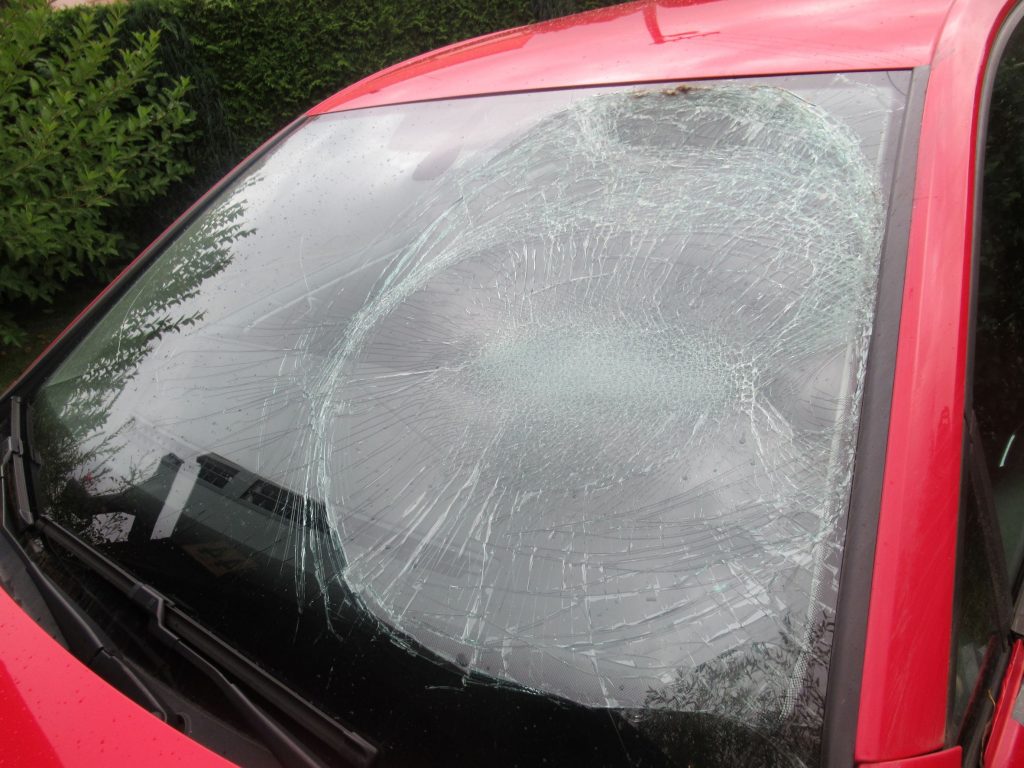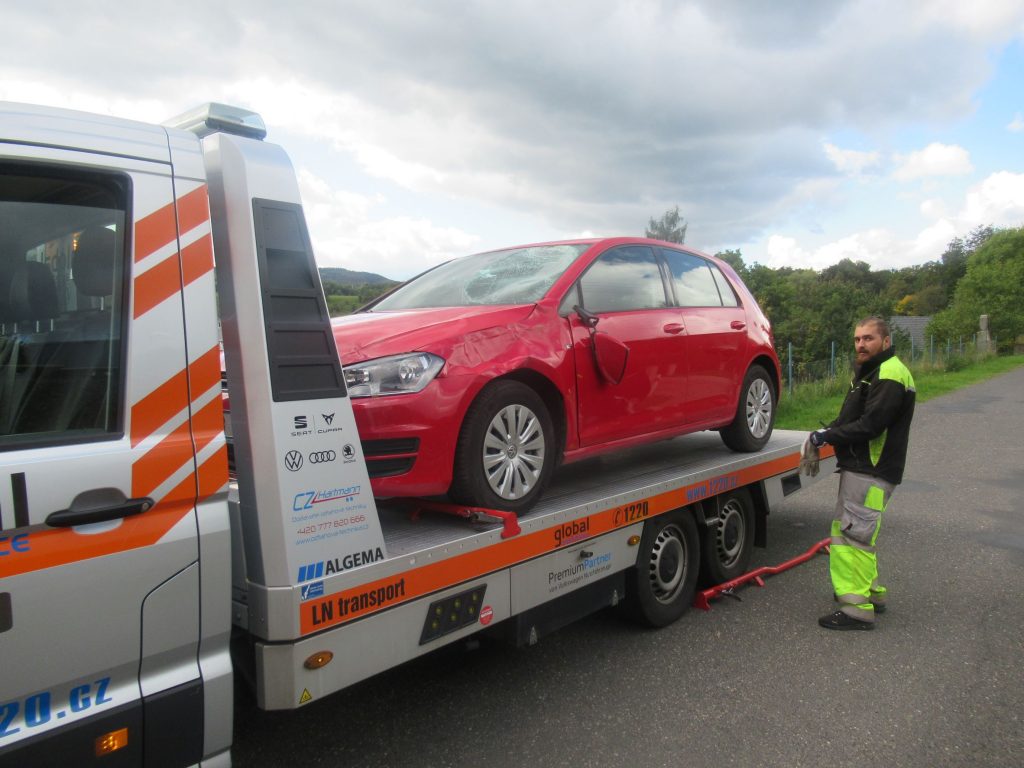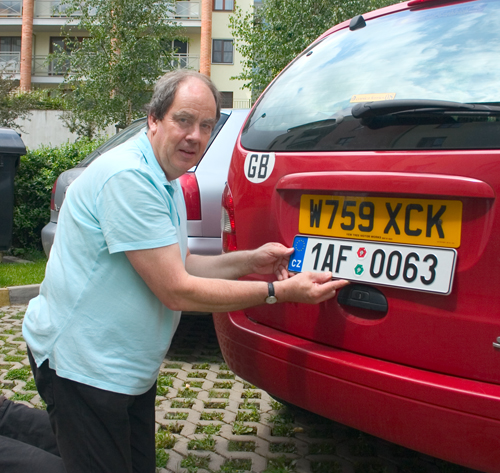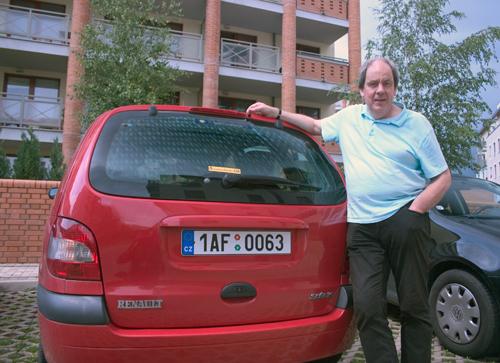
According to a news report I read some time ago, the three most common causes of road traffic accidents in the Czech Republic are: First – driving too fast. Second – driving under the influence of alcohol or drugs. Third – hitting a wild animal, either a deer or a wild boar. Unfortunately, late on the night of Monday 27th September, I joined those statistics 🙁
I was giving a lift to my friend Kát’a, from a rather late evening appointment in Ceská Lípa, to her home in Decín. Driving through the forested area between Kamenický Šenov and Ceská Kamenice, I had a major altercation with a large deer. It suddenly appeared out of the forest on my left. I only saw it for a nano-second before it crashed into the front driver’s side of the car and smashed the windscreen.
Thankfully, neither of us were physically hurt and, being on a straight stretch of road, I was very easily able to bring the car to a halt. However, we were both quite shaken up by the experience. I was also covered with numerous small shards of glass from the broken windscreen. I thought that I had brushed or shaken them all off me, but then found one sticking out of my left index finger when I woke up in my bed the following morning!


Several people who have already heard this story have asked, ‘What about the deer?’ The answer is that I do not know. Once I had stopped the car and looked in my rear-view mirror, I expected to see a dead body lying in the road. But there wasn’t one. The deer had run off into the forest on the other side of the road from whence it had come. But at around midnight and very shaken by what had happened, I wasn’t prepared to walk into a dark Czech forest to make further enquiries.
Although the windscreen was smashed, the bodywork damaged and my driver’s side door would not open properly, the car was still just mobile. So I eventually decided that the best thing to do was to drive on, very carefully. I could still just about see where I was going and I drove quite slowly to ensure the windscreen didn’t implode any further. Fortunately, it being so late at night, there was very little traffic on the roads and I safely delivered Kát’a to her flat and then drove back to my own home in Stará Oleška. Climbing out of the car via the front passenger-side door, was an ‘interesting’ exercise 😉
The following day was a public holiday so I could do nothing to start the process of getting the car repaired. That evening, I went for a drink at Bar Restaurace U Soni and was greeted on my arrival by Libor, (husband of Sona, the boss of U Soni), and by Karel, (father of a young lady who I have helped with her school English). They both gave me a knowing look and said, ‘Jelen‘, which is Czech for deer. Living in this heavily forested area, what had happened to me is a well-known local hazard.

After conversations with my insurers, much aided by Kát’a, my car was eventually collected and taken to a repair shop in Ústí nad Labem. This was one of three possible repairers recommended by my insurers. The Ústí repairer promised to start work on Monday 11th October. The other two could only offer a start date later in October.
After much toing and froing with paperwork between my insurers, the repair shop and me, including the demand for a scan of the medical certificate that says I’m fit to drive as I’m over sixty-five, finally on Wednesday 27th October, I got a text message to say I could collect my car. A journey by bus, train and another bus, got me there. I was required to pay 5808 Kc / £191.00 / €227.00 being 5% of the total repair cost. Insurance has fortunately covered the other 95% – a not inconsiderable sum!

Being without a car for a whole month was very frustrating. It was also a little expensive as I decided that to get to certain appointments and complete tasks, I needed a car. So I hired one for several days, a Škoda Fabia which, as I said at the time, made me completely Czech 🙂
Once I got my car back, I then had another expense, one that I was expecting. As I explained in my previous post about buying the car in March this year, it came fitted with Summer tyres. As it is a legal requirement here to have Winter tyres with at least 4mm of tread, when driving between 1st November and 31st March, on Thursday 4th November, I drove down to my good friend Adrian Blank in Nepomuk, to have four brand new Winter tyres fitted. Now I’m ready to face the coming Winter, hopefully without any further altercations with deer.








